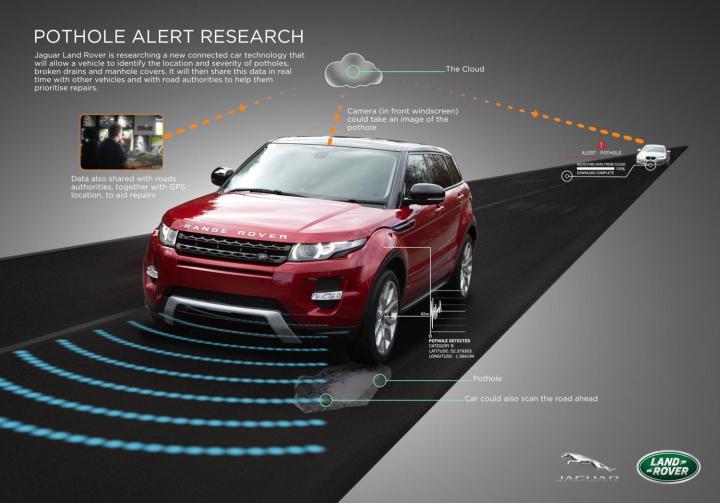
The British company is looking into using connected-car hardware to allow individual cars to detect potholes, broken drains, and manhole covers, and then pass that information along to other vehicles and those responsible for road maintenance.
If drivers are warned of potholes by other vehicles, they have a chance to slow down and prepare to avoid them. Future vehicles could even adjust their suspension settings in anticipation of a bump, Jaguar Land Rover suggests.
The prototype system builds on sensors used for the MagneRide active suspension in the Land Rover Range Rover Evoque and Discovery Sport. These sensors monitor motion and suspension-height changes to asses the state of a given surface, and adjust suspension firmness accordingly.
The next stage, Jaguar Land Rover says, involves installing additional equipment in a test vehicle. that includes a forward-facing stereo camera, to help scan the road ahead.
This ability represents a milestone on the road to a fully-autonomous car, Jaguar Land Rover connected-car czar Dr. Mike Bell said. However, the ability to communicate with other vehicles also represents a step toward the “vehicle-to-vehicle” (V2V) systems that have won favor with some safety advocates, including the U.S. National Highway Traffic Safety Administration.
Jaguar Land Rover will also work with the Coventry (U.K.) City Council to determine how data collected by individual cars could be shared with and utilized by road authorities.
The company believes its prototype camera could take pictures of potholes and send them to officials with GPS tags, potentially helping to alert them of problems and prioritize repairs.
It’ll also save drivers the trouble of writing an angry e-mail to their local government official after smashing a wheel or blowing out a tire on a particularly nasty pothole.
Editors' Recommendations
- Check out this interactive simulator for upcoming Mars rover landing
- Hyundai cracks off two new land speed records in fuel cell, hybrid cars
- Land Rover searches for ways to keep customers and regulators satisfied
- Exclusive: How Land Rover’s designers resurrected the Defender
- Redesigned Land Rover Defender is positively teeming with new tech


